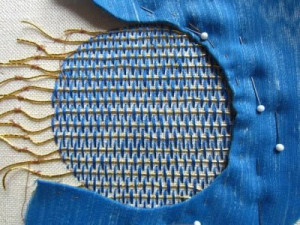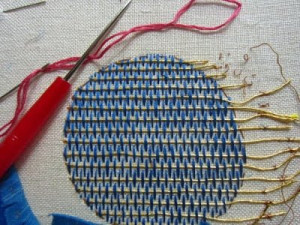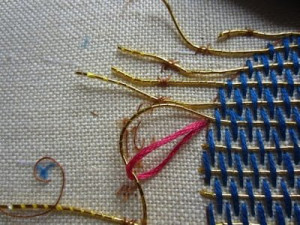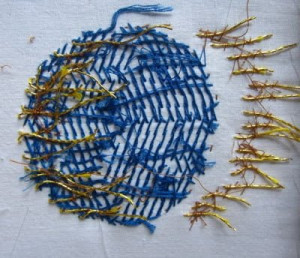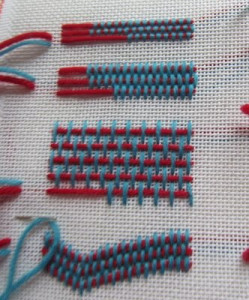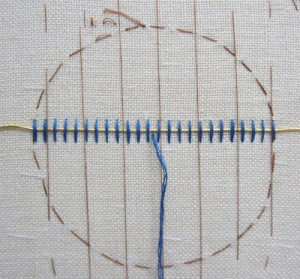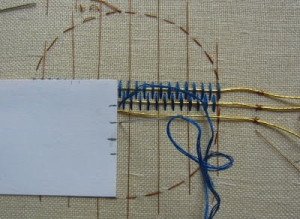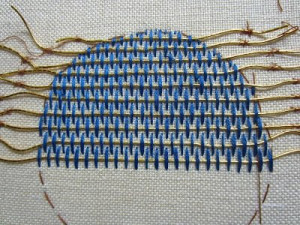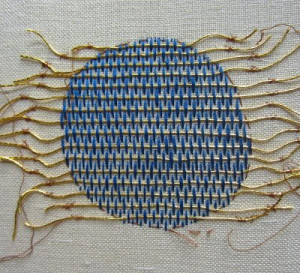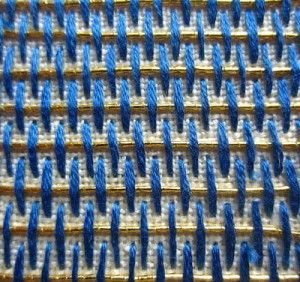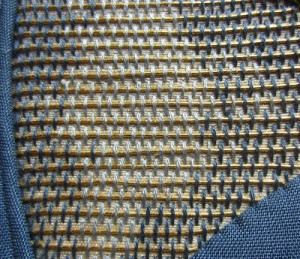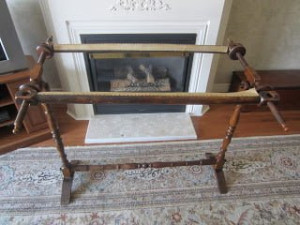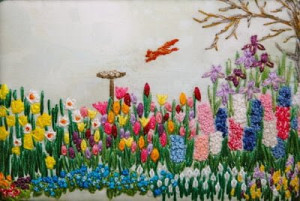This famous quote helps us through the depths of the winter weather.
To help both you and myself, let us anticipate spring. It is bitterly cold here in southern Ontario. Today looks lovely but it the cold goes right through even the warmest coat and gets into ones bones.
It is a day to stay indoors and dream of Spring Flowers.
Here are some hand stitched spring flowers which are based on chain stitch. It is amazing what one can do with the most basic and best known stitches if one plays around with them a little. One never knows what will happen. To achieve flowers that are recognizable it is important that the proportion of plant height and flower size be correct and that the colours of both foliage and the flowers also be correct. Otherwise, our eyes do not recognize them. They become generic, rather than specific.

Snowdrops. Except for celandines, these really are the first flower of spring. One can have both snow and blooms in the same flower bed. Use a white Perlé thread to give the flowers some sparkle. In nature, they really do sparkle.

Crocus also bloom in early spring. DMC floss thread in the correct colours gives us a good rendition of these popular and fragile blooms. Note that the foliage colour of all three plants is different.

Tulips are both taller and much later in the season. These flowers bloom in a multitude of different colours.


My good friend, Mary, created card inserts using the instructions for tulips. I would love to receive such a card for a birthday or to wish me well if I had been sick. It is such a personal gift to, or from, someone important in ones life.
You will find the instructions on how to stitch these flowers together with the DMC floss colour numbers in this ebook.
Hand Stitch Recognizable Spring Flowers published by ebookit.com
The book contains the instructions for 23 different flowers, bushes and trees. It also contains, and this is important, information on setting up a frame with fabric that is taut. Basic, ‘how to stitch’ information is included plus finishing and mounting ones completed work. As most books assume that everyone knows the basics, they do not cover this vital information. Because it is not widely know, I have included it in mine. It saves beginning stitchers falling into potholes and embroidery is full of them. The experience is more enjoyable if one knows where the potholes are and is able to avoid them.
The book is published in ebook format because of the high cost of colour printing. You can print it on your printer for your own personal use. We have proved many times that the instructions are complete and you will not need other assistance.
Have fun with this and enjoy anticipating Spring.
Ann




